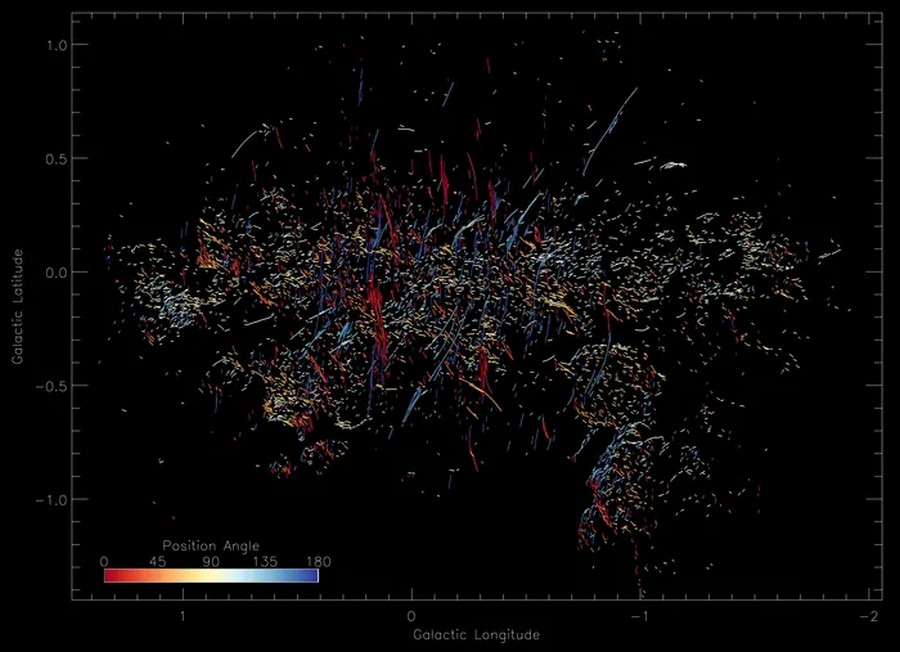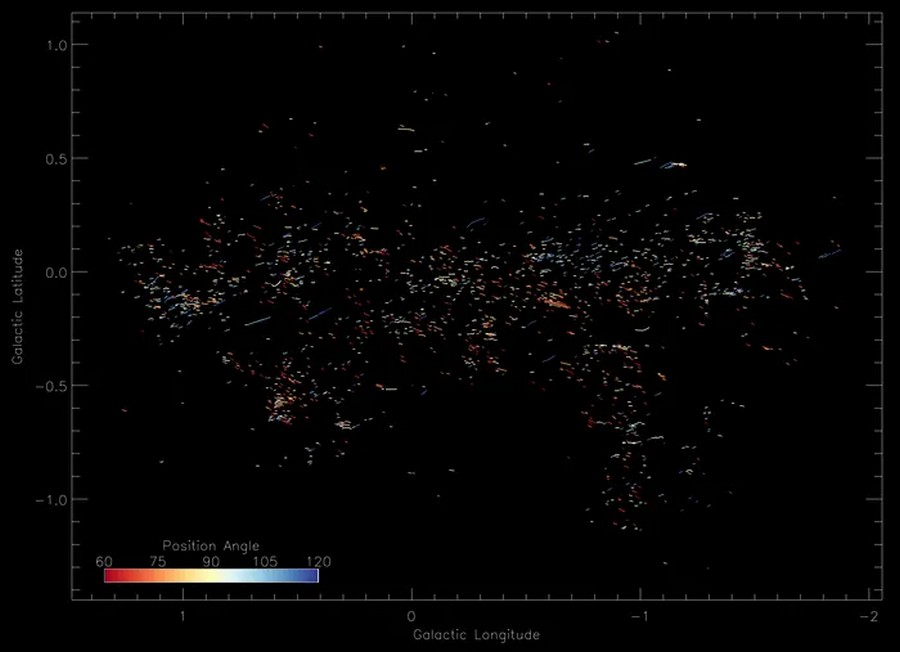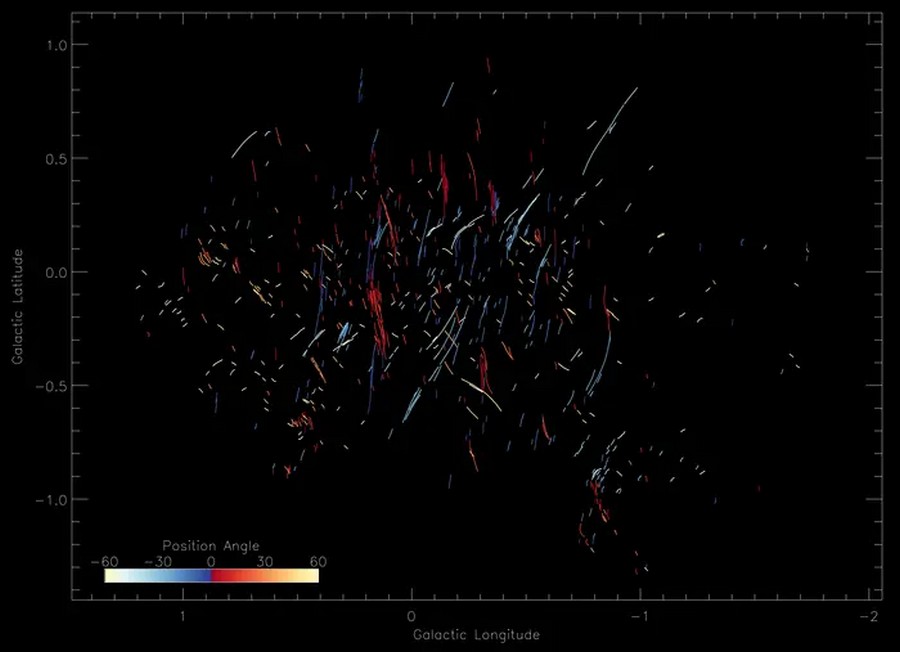An international team of astrophysicists has discovered hundreds of mysterious structures in the center of the Milky Way galaxy, which come as a surprise to scientists. These one-dimensional cosmic filaments are hundreds of horizontal or radial filaments – thin, elongated structures of heated gas that potentially originated several million years ago and interacted with Sagittarius A* – a supermassive black hole in the center of the Milky Way. On a galactic scale, the filaments have a relatively short length: from 5 to 10 light-years.

These conclusions were made almost 40 years after Farhad Yusef-Zadeh, the lead author of the study, and other researchers discovered another population of almost 1,000 one-dimensional filaments, up to 150 light-years long each, near the center of the galaxy. But then scientists discovered hundreds more paired threads in the same area in 2022. Then the researchers suggested that the filamentous structures were probably associated with the activity of Sagittarius A*, and not with supernova outbreaks, as they had previously believed. The new study reinforces and develops previous findings.

Farhad Yusef-Zadeh, professor of physics and astronomy at the Weinberg College of Arts and Sciences at Northwestern University, commenting on these results, said: “I was actually stunned when I saw these. We had to do a lot of work to establish that we weren’t fooling ourselves. And we found that these filaments are not random but appear to be tied to the outflow of our black hole. It is satisfying when one finds order in a middle of a chaotic field of the nucleus of our galaxy.”
Horizontal vs. Vertical
The researchers have discovered the structures by analyzing images taken by the MeerKAT telescope of the South African Radio Astronomy Observatory, which has 64 satellite dishes with a height of almost 20 meters each, connected every 8 kilometers.
Despite the similarities between the newly discovered strands and those identified in 1984, the authors of the new study do not believe that the populations have exactly the same features. The vertical filaments are perpendicular to the galactic plane, while the horizontal ones are parallel to it and directed radially towards the black hole. Vertical filaments surround the core of the Milky Way, while horizontal filaments seem to extend in one direction towards the black hole.

Their behavior is also different. Horizontal filaments emit thermal radiation, and the material associated with molecular clouds is partially or completely immersed in the outflow from the black hole. Vertical filaments, in turn, are magnetic and hold the electrons of cosmic rays moving at speeds close to light.
According to the scientists, they need further research to determine whether the jet outflow is coming from the black hole, which means there are more filaments on both sides of the black hole.
Sagittarius A* is the closest supermassive black hole to us, which is located 25 thousand light-years away from us. But it is relatively calm, so it is somewhat difficult to study. But this work provides evidence that it has recently been throwing quite a lot of energy into space.
Earlier we reported on how the Milky Way turned out to be lighter than it seemed.
According to Eureka Alert
Follow us on Twitter to get the most interesting space news in time
https://twitter.com/ust_magazine

